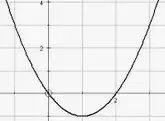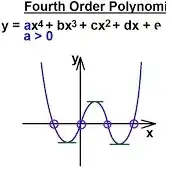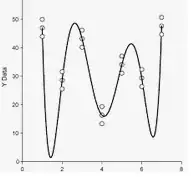There are two possible interpretations of your question... one could make gravity stronger by magically redefining it (effectively creating a new force) so that it no longer obeyed the inverse square law. What you'd define it as it entirely up to you as was not specified in the question, and as such it isn't possible to meaningfully answer that.
The more straightfoward answer is that the object now produces a gravitational field as if it massed considerably more than it did before.
Does the object shrink under its own gravity?
That depends on its compressibility, and how much gravity it now generated. If it were made of sponge, it would probably shrink. If it were made of iridium, it won't shrink so much.
Eventually you hit things like electron degeneracy pressure where an object can't shrink any more without squishing its own electrons into its protons and forming neutronium, etc. It all depends on how much gravity your object now has.
Does it pull things as far as earth can with 1g? How do two modified objects interact with gravity now greater than their mass?
The surface gravity of an object is defined as $$g = \frac{GM}{r^2}$$ where $G$ is the gravitational constant, $M$ is its gravitational mass (which you've effectively increased by magic) and $r$ is its radius.
If the object had a surface gravity of 1G, it would have to be the size of the Earth in order to produce a gravitational field of the same "size". For example, if you gave a standard golf ball a surface gravity of 1G it would have an effective gravitational mass of 2.67 x 108 kg. As you move a single golf-ball radius away from the surface, the strength of the gravitational field is now only 0.25G, and so on.
Clearly you'd get some very interesting effects close to it, but it wouldn't knock a satellite out of orbit.
How do two modified objects interact with gravity now greater than their mass?
That rather depends on the nature of your gravitational magic.
If your magic increases gravitational mass such that it behaves in a gravitational field the same way as a non-magical object of that same mass, then it will obey the regular gravitational force-of-attraction law, $F = \frac{GM_1M_2}{r^2}$ where $M_1$ and $M_2$ are the gravitational masses of the two objects involved, and $r$ is their separation. Your 1G golf ball has an effective gravitational mass of quarter of a million tonnes, and a fairly compact size. It'll punch through pretty much any structure you try to hold it up with, and sink into the ground.
I'm not sure if it actually makes any sense to say an object could have an increased gravitational mass when it came to pulling stuff towards it, but not an increased gravitational mass when it came to responding to the presence of other gravitational fields around it, unless the way gravity works in your magical universe is a bit different from the way it works here. Clearly something is different, so maybe you could handwave your magic such that the golf ball still has the inertia of a regular golf ball and flies through the air a bit like a regular golf ball but now has a weird stickiness that makes it adhere to other objects and attract crud from its surroundings.
It sounds like that's the sort of thing you want to happen here, but to me it seems equivalent to the original problem I posited, namely that you've created a new force that's only superficially similar to gravity.
And that's fine, because it is magic.


